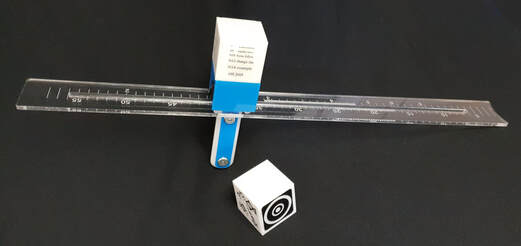UC Cube - New Design
The Ulster-Cardiff Accommodation Cube
|
The Ulster-Cardiff Accommodation CUBE has been developed by Maggie Woodhouse (Cardiff University) and Kathryn Saunders (Ulster University) to provide a quick, objective measure of accommodative function (focusing accuracy) in optometric, orthoptic and ophthalmological practice.
We, and our colleagues, have used a similar device for many years to assess accommodation in babies, young children and those with communication difficulties. Our research, and that of others, has shown that difficulties in producing and maintaining accurate accommodation are extremely common amongst children with special needs and are not uncommon in typically developing children1-5,8,9. The UC-CUBE has been shown to be repeatable and reliable and age-related normative data are available6,7. Its use allows the practitioner to identify responses that are atypical and require intervention or management. |
To assess accommodative accuracy, the UC-CUBE simply re-quires the patient to look at illuminated high contrast pictures. Pictures with varying levels of detail are available to allow testing of patients with a range of visual acuities (from approximately 6/250). Retinoscopy is used to evaluate the accuracy of the patient’s focus while they view the target. A measurement of the size of any defocus can quickly be made using the ruler and evaluated as within or outside normal limits.
An interchangeable target also allows the UC-CUBE to be used to assess accommodative amplitude, convergence and near visual acuity using targets similar to those available on the traditional RAF rule.
An interchangeable target also allows the UC-CUBE to be used to assess accommodative amplitude, convergence and near visual acuity using targets similar to those available on the traditional RAF rule.
Video on how to use the UC Cube
Contact us
|
Social MediaLegal |
Find us |
©
PA Vision 2023 All Rights Reserved - Zapped Digital

